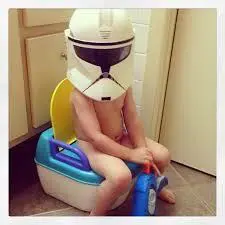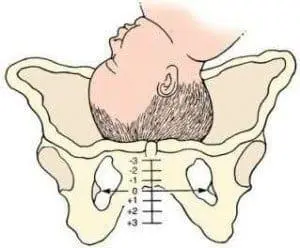When you think your little gremlin is ready to graduate to the porcelain thrown is a celebration for all involved including your kiddo, you, and the family budget. However, hold that toilet paper, because rushing a milestone of any kind, no matter the benefits, can be disastrous and disappointing– poop painting anyone?
So, how do you determine when your child is ready to potty train?
Several cues can tip you off that your child is ready for potty training 101, but none of them involve a birthday so leave age out of the equation.
Mobility:
The first and most important aspect to determine if your child is ready to potty train is mobility. A child that can’t get to the toilet can’t potty train, period. Unless special circumstances apply to your child’s ability to walk (ex/ medical condition) don’t attempt to potty train before those tear-jerking first steps. No amount of e-books and ads that claim you can potty train from birth are going to change this.
Communication:
One of the most obvious cues that your child is ready to begin potty training beyond mobility is communication skills. Whether this is verbal or sign, once a child can actively inform you that they have gone to the bathroom, or better yet, need to go to the bathroom, you have entered the prelude to potty training. This is an excellent time to set the groundwork for the actual potty training.
Mobility and communication skills are really all that are required to begin potty training. Of course, a few other cues lend to the emotional readiness of a child to potty train as well. You can train a child who is physically ready alone, but it will take much longer and be far more difficult and frustrating for both of you.
Desire:
Your almost-big-kid will show the desire to potty train by stripping or sitting on the toilet or simply showing interest in what it is and what it is for. Some children, granted just enjoy being naked, but a child that walks, talks, and despises wearing a diaper is unquestionably ready for potty training. That hatred for the plastic-butt prison will make potty training 100 percent easier.
Ability to undress and bladder control:
On the note of that stripping, if your child can easily undress this is another hint they are ready to potty train. If your child can’t get their pants off, how are they going to use the toilet? Also, watch out for bladder control. Just because a child can walk doesn’t mean they are capable of holding their pee. Not peeing during naps or long road trips is a good sign of bladder control.
These four basic signs usually indicate your child is not only ready to ditch the diapers and potty train, but wants to. Always remember that every child develops at a different speed. Some babies learn as early as 18 months, other children don’t master the toilet until three years.
Be patient, Be proud, and be prepared with a roll for the first time you hear a tiny voice from the bathroom call, “Mommmmmm….I can’t get it all off! Will you come wipe me?” Speaking of which, you might check out our page on helping kids learn to wipe their own butts next.




